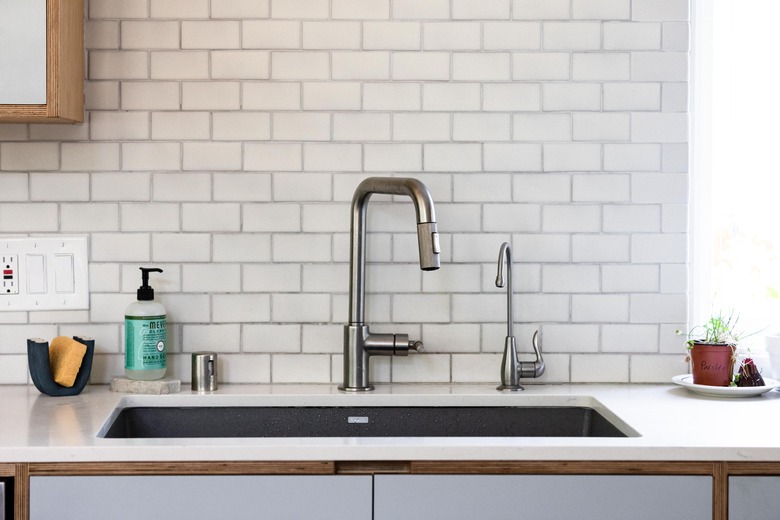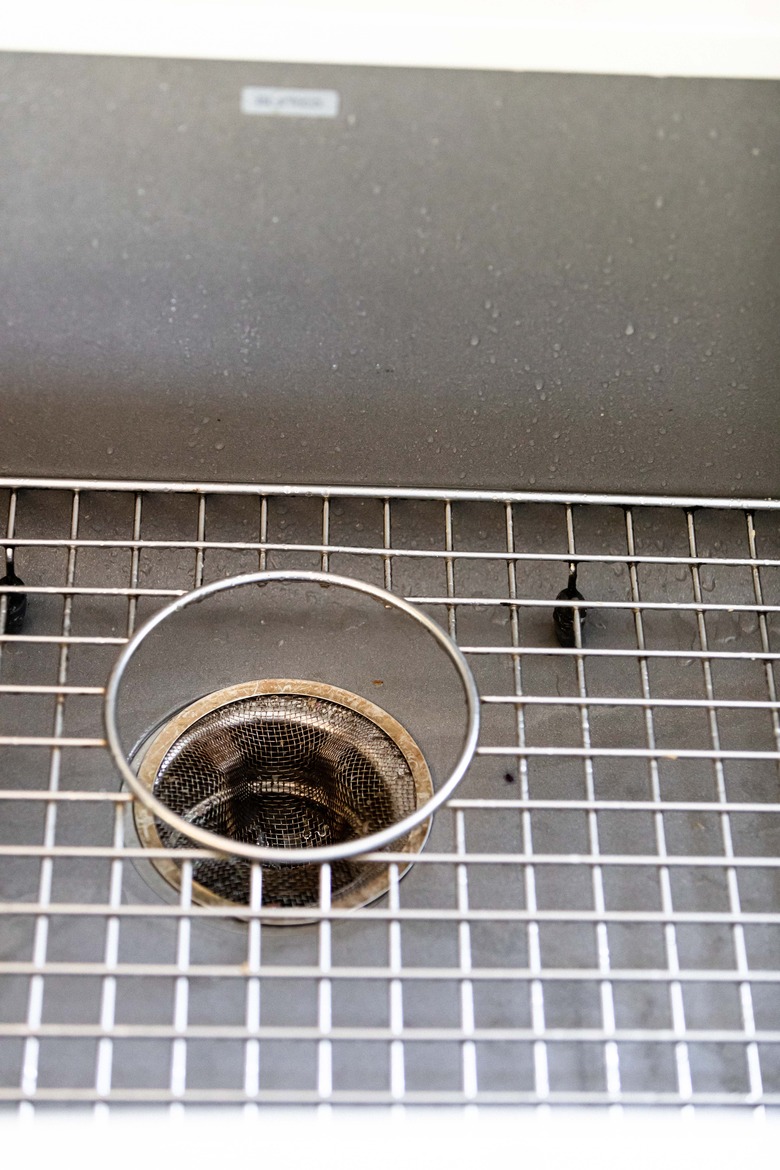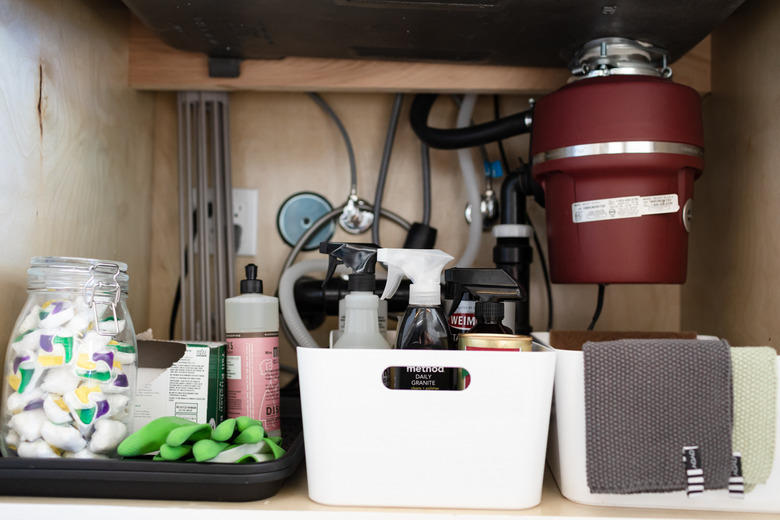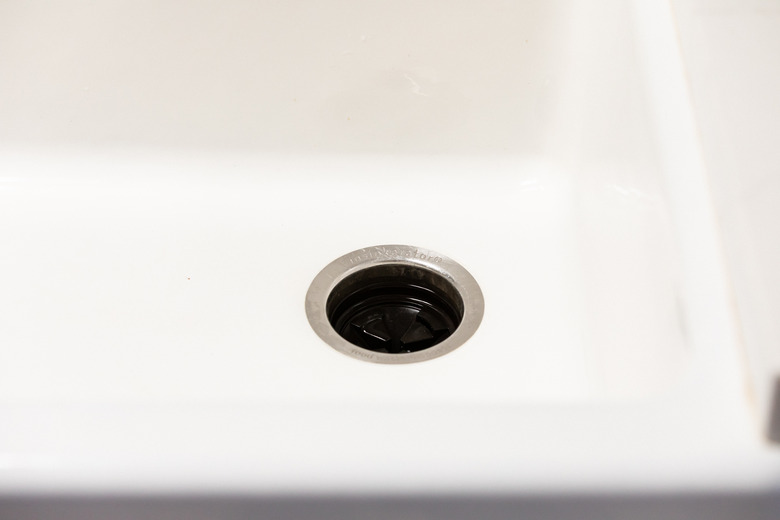Garbage Disposals: What You Should Know Before Buying
If your kitchen doesn't already have a garbage disposal, Christianson Air Conditioning & Plumbing can give you 10 good reasons for getting one, and there are only a few reasons you shouldn't, assuming you have enough space under your sink to accommodate one. By the way, if you live in Canada, food waste disposers are known as garburators, not garbage disposals.
Among the drawbacks, a garbage disposal adds to your energy costs, but considering that the amount of electricity used is minimal, you probably won't even notice the slight uptick in your bill. Another drawback is that a garbage disposal is a mechanical device that can malfunction, but that's more of a concern for landlords than it is for homeowners, and given that units tend to last for 10 to 20 years, it's seldom a deal breaker. Garbage disposals do get clogged fairly frequently, but if you know what to do when that happens and how to prevent it, clogs are more of an annoyance than an actual drawback.
You may have misconceptions about how a garbage disposal works, but once you replace those with an accurate understanding, you'll have a better idea of how to keep your garbage disposal humming along the way it's supposed to, and you'll be able to enjoy its many benefits.
Five Reasons to Get a Garbage Disposal
Five Reasons to Get a Garbage Disposal
Distilling the 10 benefits of garbage disposals elucidated by Christianson into half as many still provides plenty of motivation to get one. A garbage disposal can do the following and more:
- Save space and work: By grinding up food waste and sending it down the drain, a garbage disposal eliminates the need for a separate food bin in the kitchen and the need to carry the waste out to the trash or the compost bin.
- Save time: Waste disposal makes washing dishes easier. Just flush food waste into the drain and turn on the disposal for a couple of seconds, and you're ready to wash.
- Protect the plumbing: Large food particles get ground into a pureé that drains easily rather than getting caught in the pipes and causing a clog.
- Reduce greenhouse gases: Decomposing food waste emits methane, carbon dioxide and water vapor, all of which contribute to global warming. Each new garbage disposal represents a small decrease in harmful emissions, and the beneficial effects add up.
- Eliminate pest infestations: Food waste sitting in the corner waiting to be dumped attracts rats, mice and insects. With a garbage disposal, you're more likely to have a pest-free kitchen.
By reducing stored kitchen waste, a garbage disposal can also help keep your kitchen odor-free, but the tradeoff is that the disposal itself can smell bad if you don't maintain it. Preventing garbage disposal odors is easier than deodorizing your entire kitchen, though.
How a Garbage Disposal Works
How a Garbage Disposal Works
If you look into the opening of a garbage disposal, you'll see three or four loose-fitting, oblong fittings on the bottom. A common misconception is that these are blades that simultaneously grind up food waste and fling it to the sides of the canister where it falls into the drain. These are actually impellers, and while they do fling food around, they don't cut it.
The shredder ring, a 1-inch or 2-inch-high grate similar to a cheese grater that surrounds the grind chamber, is the part of the appliance that does all the work. The impellers batter the food at high speed and hurl it repeatedly against the sides of the canister, and it's the shredder ring that pulverizes it.
Once you know this, you can understand why you should never put starchy foods such as potato peels, pasta and rice as well as coffee grounds and greasy and oily foods into a garbage disposal, and if it isn't clear, you can use a cheese grater to illustrate it for yourself. Grate a hefty chunk of cheddar and notice how the blades on the grater gradually get clogged, making grating more and more difficult. The same thing happens to the shredder ring as starches, greases, oils and small particles congeal or collect on the blades. If you don't do anything about it, the garbage disposal works harder and won't last as long.
Garbage Disposals and Septic Systems
Garbage Disposals and Septic Systems
Septic pros tend to not be in favor of installing a garbage disposal in a home serviced by a septic system because partially ground food ends up at the bottom of the septic tank and gradually reduces the available space. The growing sludge layer interferes with waste digestion and could end up clogging the drain field and, at the very least, create the need for more frequent pumping. Insinkerator, a leading garbage disposal manufacturer, has a solution for that.
The Insinkerator Evolution Septic Assist garbage disposal injects enzyme-producing microorganisms into the septic system every time you use it. The enzymes immediately go to work on the food that was just processed, including oils, greases and starches that can gum up the tank. The Septic Assist features a refillable reservoir for the enzyme solution, a stainless steel grinding chamber and a two-stage grinder capable of dispatching bones and other hard objects, and it's quieter than many other models.
If you have a septic system and you don't have a Septic Assist model, you simply have to be more judicious about what you put in the garbage disposal. Besides harming your tank, partially processed waste causes odors, and it may clog the pipes.
Choosing a Garbage Disposal
Choosing a Garbage Disposal
Some of the leading garbage disposal manufacturers include Insinkerator, Waste King, Kitchen Aid, General Electric and — last but not least — Moen, a company better known for its faucets. Insinkerator models generally top the list of garbage disposal reviews, and those from Waste King are not far behind.
Garbage disposals are powered by induction motors with power ratings from 1/3 to 2 horsepower (hp) and more, and while a 1/3-hp model saves energy, Healthy Kitchen 101 advises that it's too small and inefficient for most purposes, so a single person in a small apartment is better off with a 1/2-hp model. Moving up the scale, a 3/4-hp model can serve up to six people, a 1-hp model will easily serve a family of eight and 2-hp models are intended for commercial kitchens.
Healthy Kitchen 101 taps the 3/4-hp Insinkerator Essential XTR as the best buy overall, while Mr. Garbage Disposal prefers the 3/4-hp Insinkerator Evolution Compact. If you're outfitting a small home or apartment, the top choices are the 1/2-hp Insinkerator Badger and the 1/-hp Waste King Legend, while the 1-hp Insinkerator Evolution Series has the top high-end disposals.
Garbage Disposal Installation
Garbage Disposal Installation
Although a garbage disposal requires both electrical and plumbing connections, it isn't that difficult to install one, especially if it has a power cord and you already have an outlet into which to plug it. You may have an outlet under the sink for the dishwasher, and it's fine to plug the garbage disposal into that as long as the outlet and the breaker controlling the circuit are rated for 20 amps. You can also hard-wire a garbage disposal directly to an electrical circuit by connecting the circuit wires to the terminals on the disposal's electrical panel.
If you're installing a new garbage disposal in a kitchen sink that didn't have one before, you'll have to remove the sink strainer and replace it with a mounting bracket. The bracket may be supplied with the garbage disposal, or you may have to purchase it separately. Once the bracket is in place, you mount the garbage disposal by fitting it onto the bracket and giving it a 90-degree rotation to lock it in place.
Most garbage disposals come with an inlet port for the dishwasher, and before you use this port, you have to remove the plug according to the manufacturer's instructions. There's also a drain port in the side of the canister for the P-trap connection, and you'll probably have to modify the trap assembly on the sink drain to make it fit.
How to Handle a Clog
How to Handle a Clog
Every garbage disposal clogs at least once during its service life, and if you aren't careful about what you put into it, it could clog frequently. The clog is usually caused by food scraps, such as partially ground bones or fibrous vegetables, that are caught in the gap between the shredder ring and the impeller rotor.
To get the clog out, you have to manually spin the rotor back and forth to dislodge the obstruction. Insinkerator models come with a clog-busting key — which is essentially a 1/4-inch hex wrench — that fits into a slot on the underside of the rotor. Turn off the power, insert the key and use it to wiggle the rotor back and forth until it spins freely. You then press the red reset button to energize the motor, which switched off automatically when the clog occurred to prevent the motor from burning out.
If you don't have an Insinkerator, you'll probably have to use a wooden spoon or broom handle inserted into the mouth of the appliance to spin the rotor. If you treasure your fingers, never do this with your hand, even after turning off the power. After resetting the motor, turn on the cold water and run the garbage disposal to complete the repair.
What You Can and Can't Grind
What You Can and Can't Grind
Another common misconception is that you can't grind bones in a garbage disposal. The truth is that it's fine to grind small, soft ones, such as chicken bones, but not large, hard ones, such as steak or pork chop bones. Some of the other food scraps that should go in the garbage and not the garbage disposal include:
- Fibrous fruit and vegetables, such as celery, artichokes and pineapple
- Vegetable peels, especially those from starchy root vegetables
- Coffee beans
- Grease and oil
- Pasta and rice
- Metal objects, including utensils and foil wrap
You can grind salt, ice and citrus fruit peels, and in fact, you should use all three periodically to keep the shredder ring clean and to control odors. Follow these instructions to clean and deodorize:
- Fill the grind chamber with ice cubes fresh from the freezer.
- Add 1/2 cup of kosher salt to lower the temperature and harden any congealed grease or starch on the shredder ring.
- Add a tablespoon or two of baking soda for deodorizing and disinfecting.
- Let the mixture sit for 30 minutes to an hour. Then, run the cold or hot water, turn on the switch and grind all the ice. As the ice passes through the shredder ring, it will take all the congealed contaminants with it.
- Slice up one or two lemons or limes and grind them after all the ice is gone.
Once a month or after heavy use, it's a good idea to slice up one or two lemons, limes or oranges and grind them by themselves in the garbage disposal to help control odors.



